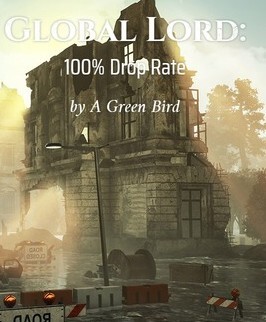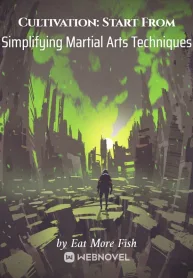Chapter 132 The Creation Of Steam Turbines
Poul traversed the hallways, making his way to the opulent drawing room as Jonathan assembled the newly recruited engineers brought in by James Russel. Within moments, Jonathan's voice echoed through the corridors, beckoning the engineers into the elegantly furnished chamber. As they filed in, their eyes fell upon Poul, who was meticulously sketching schematic diagrams that had become all too familiar to them during their countless hours of contemplation.
"So that's Poul Nielsen, huh?" whispered one engineer to his colleague, the awe in his voice barely contained.
"Indeed," came the hushed reply, the engineer's gaze lingering on Poul's distinguished silver locks.
"Settle down, gentlemen," Poul commanded, his focus unwavering from the chalkboard as his hand deftly continued its work. "We shall commence shortly."
The engineers found their designated seats, placing their notebooks upon the antique arm tables as they waited with bated breath for Poul to complete his intricate rendering of what appeared to be a steam turbine. After a few more minutes, Poul's chalk made its final stroke, and he pivoted to face his attentive audience. Jonathan leaned against a corner of the room, his keen eyes observing the forthcoming lecture.
"Now, before we delve into the intricacies of steam turbines and their components, I must ensure everyone is present," Poul announced, surveying the room with a discerning eye.
"All are accounted for, Poul," Jonathan confirmed. "You may proceed."
"Thank you, Jonathan," Poul replied. Just as he was poised to begin, the staccato rhythm of footsteps resounded in the hallway, culminating in the abrupt opening of the drawing-room door. Poul and Jonathan instantly recognized the two breathless engineers standing before them.
"Walter, Timothy?" Poul inquired, surprise flickering across his face. "What brings you here?"
"We couldn't miss this," Walter panted, a determined glint in his eye.
"Would you mind if we sat in?" Timothy implored, his gaze pleading.
Poul could see that the two were driven by an insatiable curiosity and a thirst for knowledge in their respective fields. Given that steam turbines were indeed pertinent to their work, he saw no reason to deny them the opportunity.
"Very well," Poul acquiesced. "Take your seats."
With the unexpected guests settled, Poul cleared his throat and began his lecture.
"Today, we shall discuss steam turbines, their various components, and the concepts underlying their operation," Poul announced, his voice resonating with authority. "Furthermore, I shall provide insights into the manufacturing techniques that will make this schematic diagram a reality. I know that the technology and concept are new but I will do my best to make you understand it."
A murmur of excitement rippled through the audience, and Poul proceeded to outline the basics of the steam turbine. He described its core principle: the conversion of steam's kinetic energy into mechanical energy, achieved through the interaction between the steam and the turbine's moving blades.
Poul then delved into the intricacies of the steam turbine's operation. "You see," he explained, "there are two main types of steam turbines: impulse turbines and reaction turbines. In an impulse turbine, steam is expanded in a nozzle, creating a high-velocity jet that strikes the turbine blades, causing the rotor to spin. In contrast, a reaction turbine relies on the pressure drop across the moving blades, generating force and causing the rotor to rotate."
The engineers listened intently, their eyes fixed on Poul as he continued to demystify the complex inner workings of steam turbines. He discussed the various stages of a multi-stage turbine, explaining how the steam's pressure and temperature decreased as it progressed through each stage, and how the efficiency of the turbine could be improved through compounding methods.
"Now, let us discuss how steam turbines can be manufactured using the resources and methods available to us," Poul said, his voice resonating with the passion of a true expert.
"To create the turbine blades, we must first choose the appropriate material. Brass and cast iron are common materials in our time; however, we can also explore the use of steel alloys for increased strength and durability."
Poul continued, explaining the process of casting turbine blades.
"Casting involves creating a mold of the desired blade shape, then pouring molten metal into the mold and allowing it to solidify. Once cooled, the blades are extracted and then carefully finished to achieve the precise dimensions and aerodynamic profile required."
The engineers listened attentively, scribbling notes as Poul provided an overview of the forging process.
"Forging, on the other hand, involves shaping the metal through a combination of heat and pressure. The metal is heated until it becomes malleable, then hammered or pressed into the desired shape. This process often results in a more robust and durable blade."
Poul went on to discuss the assembly of the various components into a complete steam turbine.
"The blades must be securely attached to the rotor, which is the central rotating component of the turbine. This requires precision and care, as any misalignment or imbalance can lead to reduced efficiency or even catastrophic failure."
He emphasized the importance of proper sealing and lubrication, explaining how steam leakage could decrease performance and increase wear on the moving parts.
pαпdα Йᴏνê|,сòМ "The bearings, which support the rotor and allow it to rotate freely, must be carefully machined and lubricated to minimize friction and ensure smooth operation. Any questions?"
One of the engineers raised a hand.
"Uhm, sir, since you said steel alloys are going to be used? What steel alloys specifically?"
"Ah, an excellent question," Poul replied and continued. "Carbon steel is a good option for steam turbine components because carbon steel possesses high tensile strength and hardness, which are essential qualities for withstanding the intense forces and high temperatures generated within a steam turbine. These properties enable carbon steel to resist deformation and wear, ensuring a longer service life for the turbine components.
Secondly, carbon steel exhibits good ductility and malleability, allowing it to be shaped and formed into the intricate contours of turbine blades and other components. This is especially important when considering the forging process, as the metal must be capable of being worked and shaped while maintaining its structural integrity. Lastly, it is more readily available and affordable than many other steel alloys."
As Poul expounded on the merits of carbon steel, the engineers listened attentively, absorbing every detail with keen interest. It was evident that Poul, who designed the turbine, is knowledgeable about it.
"Well, if there is no question, we will begin making the steam turbines."
Days turned into weeks, and the engineers worked tirelessly under Poul and Jonathan's guidance to bring the steam turbine from a mere concept to a tangible reality. Each step of the process was met with new challenges and obstacles, but the team's determination and collaborative spirit remained unshakable.
The workshop was a cacophony of noise as hammers struck metal, machines whirred, and the engineers engaged in passionate discussion. The air was heavy with the scent of molten metal, lubricating oil, and sweat. Despite the grueling conditions, the team pushed forward, driven by the promise of a revolutionary breakthrough.
Under Poul and Jonathan's watchful eye, the team refined their techniques, improving both the precision and efficiency of the turbine components. Blades were cast and forged, rotors were machined, and bearings were lubricated, each part meticulously crafted and assembled. The turbine began to take shape, its once-dormant components now poised to harness the power of steam.
Finally, after countless hours of labor, the moment of truth arrived. The engineers gathered in the testing area, anticipation etched on their faces as the steam turbine loomed before them. Poul and Jonathan exchanged a glance, their confidence in the team's efforts unwavering.
"We are going to test this tomorrow morning, so I want everyone to take some rest first," Poul said.
"So that's Poul Nielsen, huh?" whispered one engineer to his colleague, the awe in his voice barely contained.
"Indeed," came the hushed reply, the engineer's gaze lingering on Poul's distinguished silver locks.
"Settle down, gentlemen," Poul commanded, his focus unwavering from the chalkboard as his hand deftly continued its work. "We shall commence shortly."
The engineers found their designated seats, placing their notebooks upon the antique arm tables as they waited with bated breath for Poul to complete his intricate rendering of what appeared to be a steam turbine. After a few more minutes, Poul's chalk made its final stroke, and he pivoted to face his attentive audience. Jonathan leaned against a corner of the room, his keen eyes observing the forthcoming lecture.
"Now, before we delve into the intricacies of steam turbines and their components, I must ensure everyone is present," Poul announced, surveying the room with a discerning eye.
"All are accounted for, Poul," Jonathan confirmed. "You may proceed."
"Thank you, Jonathan," Poul replied. Just as he was poised to begin, the staccato rhythm of footsteps resounded in the hallway, culminating in the abrupt opening of the drawing-room door. Poul and Jonathan instantly recognized the two breathless engineers standing before them.
"Walter, Timothy?" Poul inquired, surprise flickering across his face. "What brings you here?"
"We couldn't miss this," Walter panted, a determined glint in his eye.
"Would you mind if we sat in?" Timothy implored, his gaze pleading.
Poul could see that the two were driven by an insatiable curiosity and a thirst for knowledge in their respective fields. Given that steam turbines were indeed pertinent to their work, he saw no reason to deny them the opportunity.
"Very well," Poul acquiesced. "Take your seats."
With the unexpected guests settled, Poul cleared his throat and began his lecture.
"Today, we shall discuss steam turbines, their various components, and the concepts underlying their operation," Poul announced, his voice resonating with authority. "Furthermore, I shall provide insights into the manufacturing techniques that will make this schematic diagram a reality. I know that the technology and concept are new but I will do my best to make you understand it."
A murmur of excitement rippled through the audience, and Poul proceeded to outline the basics of the steam turbine. He described its core principle: the conversion of steam's kinetic energy into mechanical energy, achieved through the interaction between the steam and the turbine's moving blades.
Poul then delved into the intricacies of the steam turbine's operation. "You see," he explained, "there are two main types of steam turbines: impulse turbines and reaction turbines. In an impulse turbine, steam is expanded in a nozzle, creating a high-velocity jet that strikes the turbine blades, causing the rotor to spin. In contrast, a reaction turbine relies on the pressure drop across the moving blades, generating force and causing the rotor to rotate."
The engineers listened intently, their eyes fixed on Poul as he continued to demystify the complex inner workings of steam turbines. He discussed the various stages of a multi-stage turbine, explaining how the steam's pressure and temperature decreased as it progressed through each stage, and how the efficiency of the turbine could be improved through compounding methods.
"Now, let us discuss how steam turbines can be manufactured using the resources and methods available to us," Poul said, his voice resonating with the passion of a true expert.
"To create the turbine blades, we must first choose the appropriate material. Brass and cast iron are common materials in our time; however, we can also explore the use of steel alloys for increased strength and durability."
Poul continued, explaining the process of casting turbine blades.
"Casting involves creating a mold of the desired blade shape, then pouring molten metal into the mold and allowing it to solidify. Once cooled, the blades are extracted and then carefully finished to achieve the precise dimensions and aerodynamic profile required."
The engineers listened attentively, scribbling notes as Poul provided an overview of the forging process.
"Forging, on the other hand, involves shaping the metal through a combination of heat and pressure. The metal is heated until it becomes malleable, then hammered or pressed into the desired shape. This process often results in a more robust and durable blade."
Poul went on to discuss the assembly of the various components into a complete steam turbine.
"The blades must be securely attached to the rotor, which is the central rotating component of the turbine. This requires precision and care, as any misalignment or imbalance can lead to reduced efficiency or even catastrophic failure."
He emphasized the importance of proper sealing and lubrication, explaining how steam leakage could decrease performance and increase wear on the moving parts.
pαпdα Йᴏνê|,сòМ "The bearings, which support the rotor and allow it to rotate freely, must be carefully machined and lubricated to minimize friction and ensure smooth operation. Any questions?"
One of the engineers raised a hand.
"Uhm, sir, since you said steel alloys are going to be used? What steel alloys specifically?"
"Ah, an excellent question," Poul replied and continued. "Carbon steel is a good option for steam turbine components because carbon steel possesses high tensile strength and hardness, which are essential qualities for withstanding the intense forces and high temperatures generated within a steam turbine. These properties enable carbon steel to resist deformation and wear, ensuring a longer service life for the turbine components.
Secondly, carbon steel exhibits good ductility and malleability, allowing it to be shaped and formed into the intricate contours of turbine blades and other components. This is especially important when considering the forging process, as the metal must be capable of being worked and shaped while maintaining its structural integrity. Lastly, it is more readily available and affordable than many other steel alloys."
As Poul expounded on the merits of carbon steel, the engineers listened attentively, absorbing every detail with keen interest. It was evident that Poul, who designed the turbine, is knowledgeable about it.
"Well, if there is no question, we will begin making the steam turbines."
Days turned into weeks, and the engineers worked tirelessly under Poul and Jonathan's guidance to bring the steam turbine from a mere concept to a tangible reality. Each step of the process was met with new challenges and obstacles, but the team's determination and collaborative spirit remained unshakable.
The workshop was a cacophony of noise as hammers struck metal, machines whirred, and the engineers engaged in passionate discussion. The air was heavy with the scent of molten metal, lubricating oil, and sweat. Despite the grueling conditions, the team pushed forward, driven by the promise of a revolutionary breakthrough.
Under Poul and Jonathan's watchful eye, the team refined their techniques, improving both the precision and efficiency of the turbine components. Blades were cast and forged, rotors were machined, and bearings were lubricated, each part meticulously crafted and assembled. The turbine began to take shape, its once-dormant components now poised to harness the power of steam.
Finally, after countless hours of labor, the moment of truth arrived. The engineers gathered in the testing area, anticipation etched on their faces as the steam turbine loomed before them. Poul and Jonathan exchanged a glance, their confidence in the team's efforts unwavering.
"We are going to test this tomorrow morning, so I want everyone to take some rest first," Poul said.







